
Aftershokz updated the flagship line this year, and now the headphones are really nice to listen to.
Whereas before Aeropex the model range improved to a greater extent “cosmetically”, the new version pleases not only with design, but also with “stuffing”.
By the end of 2019, users had accumulated a sufficient number of claims, which, however, were “fixed” in stages. Say, when it became obvious that for active sports the headband of the Bluez models is rather fragile, it was replaced by a titanium ( Trekz Titanium ). When the Titanium models began to seem heavy and too vibrating, the Trekz Air made it easier by a few grams.
The issue with sound was solved rather cunningly than for a long time: the intensity of vibration feedback on the bass was reduced due to an artificial decrease in volume. The last time, indeed, many reviews indicated that the flagship version is too quiet for busy tracks.
Thus appeared Aeropex - a loud, lightweight, flexible, durable flagship of the upcoming sports season.
What happened
At first, this headline was “what has changed,” but then, since much has changed, we decided to just talk about how the new headset came out.
Design
The name of the Aeropex model may have two roots. One (as in the Air model) denotes the “air” component, hinting at lightness; the second can be perceived as part of the word “Apex”, embodying the theme of “corner”, “bend”. Each of them (if the hypothesis is true, of course) is important for the description of the new model.

Such a characteristic as lightness - headphones weigh approx. 25 grams is highly regarded among the main audience that Aftershokz refers to among athletes. On the head, the new model is hardly felt, does not press, but it sits quite tightly and comfortably. No wires - needless to say.

At the same time, Aeropex did not suffer in terms of autonomy, and even won - against 6-7 hours from previous models, here it is 7-8. Extended life is achieved including the new version of Bluetooth 5.0 with low power consumption.
The titanium flexibility of the headband - as the main feature - has been preserved. Headphones can still be literally tied into a knot, if necessary, with the subsequent preservation of the form.
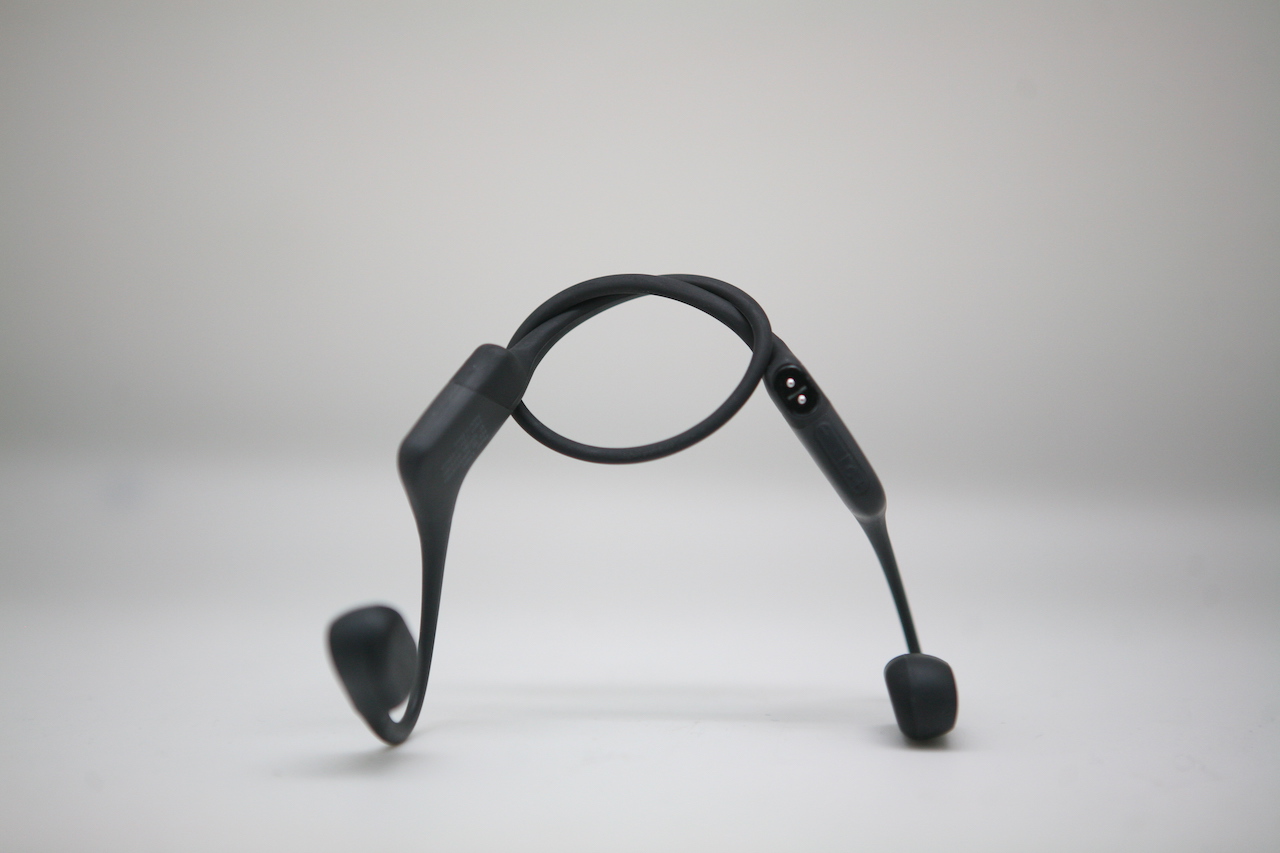
The radical change affected the speakers: they became smaller, changed their shape from rectangular to oval and are now located at a slightly larger angle, which provides a different perception of sound.

How do they sound
In this version, investment in sound is extremely noticeable. If the first titanium models, strictly speaking, did not differ in dynamics at all, and vibration mitigation was achieved in a technically simple way, then here we have a number of improvements.
Firstly, as already noted, this is a new form and a different fit to the bones, which corny provides a different perception at the user level.
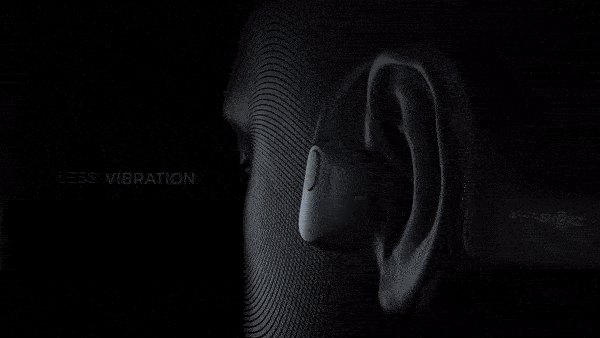
Also inside is the new Qualcomm QCC3024 processor , let's say, with a new bandwidth and almost no delay when watching videos.
It is difficult to say whether he directly affected the sound quality. The processor is more responsible for the transmission speed, however, we have noticeable differences by ear: the sound has become cleaner, softer with decent detail. Aeropex is still more of a “middle" headphone, so the vocals here are not satisfactory. But in this version, the bass is not so much felt as before, but it is actually heard, but due to the “bevel” dynamics the vibration is not so noticeable and annoying. The RF range is also quite well developed.
Let's be honest: as experts in describing sound in a word, we are not always convincing. We, in turn, asked to drive both models through the equipment, so that you could feel by ear whether there is a real difference in the sound of both of these.
In this video, from 5 minutes, the author briefly comments on the frequency response, and also makes it possible to listen to different models of bone headphones in parallel on the same examples.
It is definitely difficult to say how correct it is to “drive off” headphones with bone conduction using classical methods. Say, when a similar test for RTings was done for the Air model, the team separately stated that this was not entirely correct, they say, but there is no other way out so far. And, nevertheless, the comparison, in our opinion, is indicative and evidence-based.
Of course, different music will sound differently, so that "genre" as a characteristic is appropriate. But it is appropriate to say that this is typical for the perception of any headphones. It is interesting, for example, to read reviews of, say, Audeze headphones of a completely different order, in which authors can also say that this or that music does not sound quite as expected.
And as a result of the topic: we got a really new sound here, and not just improvements from the “louder-quieter” series, and this is noticeable by ear.
What became of isolation
Earlier, the sound leak was compensated by the antiphase from the holes along the edges of the speaker, now these holes are gone. At the same time, the headphones outside are even quieter.
How this is technically implemented is not yet completely obvious, but implemented conscientiously, and the technology responsible for the leak was called PremiumPitch 2.0+. The increased “closure” of the case is not accidental - the headphones have IP67 protection, so any extra holes were undesirable.
They do not have complete sealing, like the Xtrainerz player , but are still higher in class than the previous models: dust, splashes, rain, occasional short dives into a puddle on a run will withstand.
For the same purpose, we revised the charging option: the cable connector now looks like this. The corresponding cable itself is, of course, included.
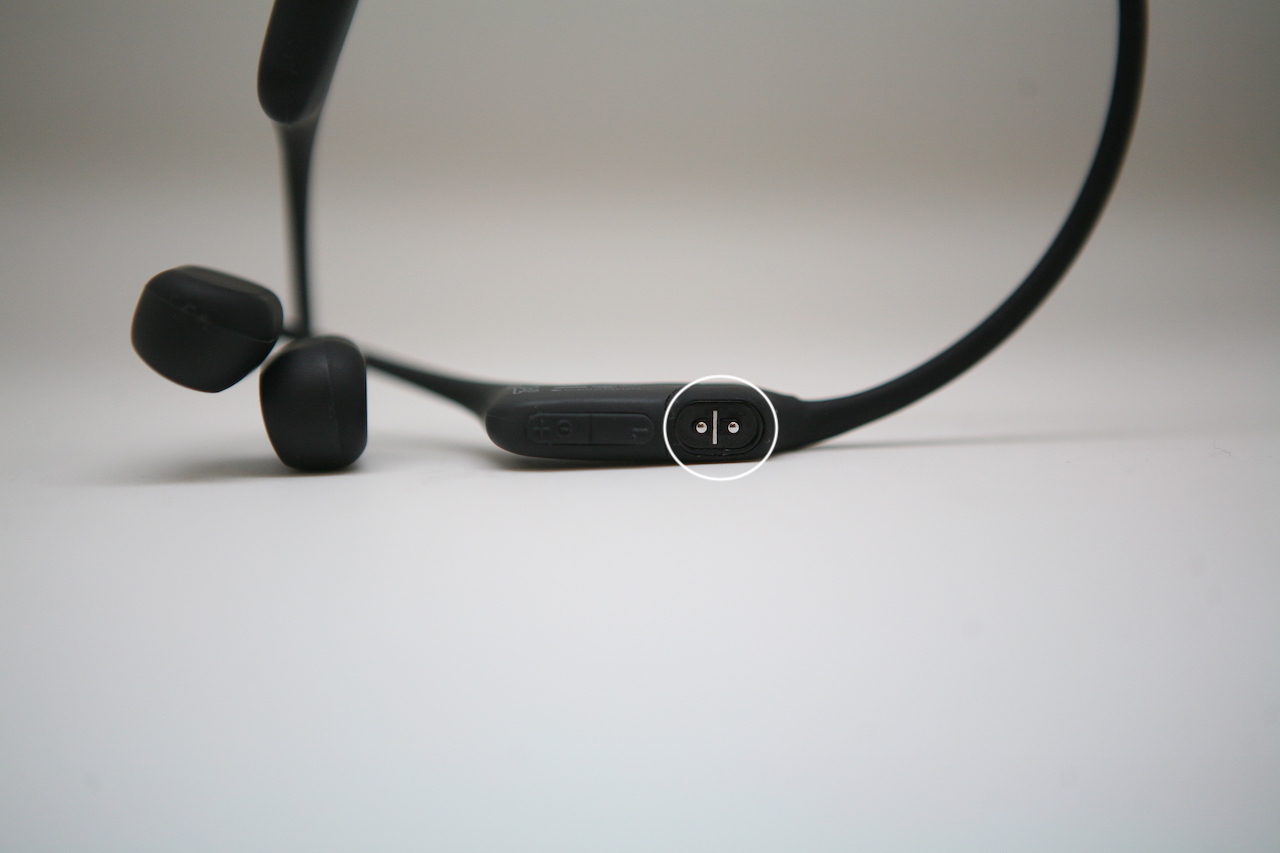
Control
Control buttons 3. One is placed on the speaker - this is a “play-pause", a button for answering a call.

Two are located on the case: volume, switching tracks, turning on and off. On-off combined with the volume up button. Headphones are connected to the signal source, as before, by holding the power button for a long time until the diode indicator flashes alternately.
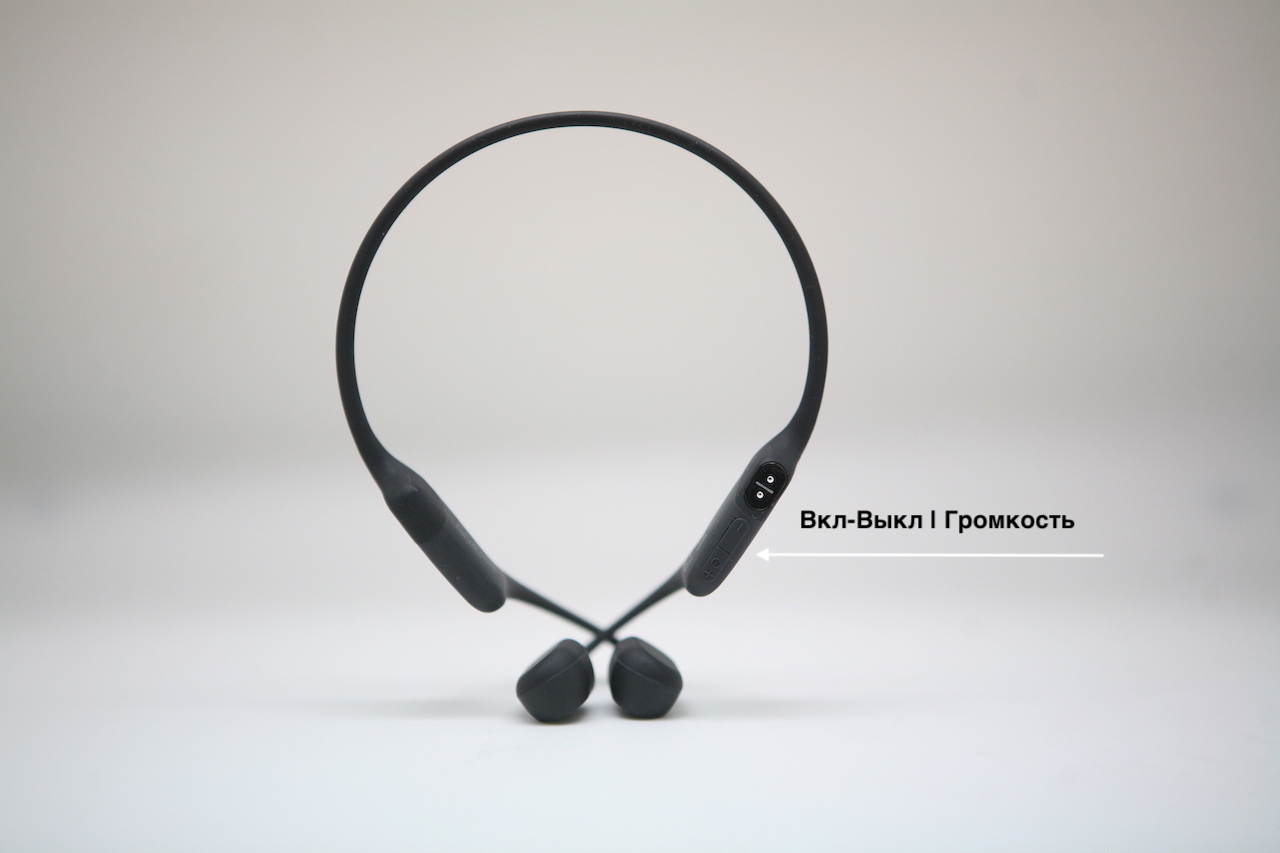
The next time they turn on, they will "pick up" automatically.
What is the result
In addition to the fact that the headphones have become "more athletic", it should be noted that in this form they are already claiming a more massive segment, and the city headsets as a whole occupy the category that they can fit.
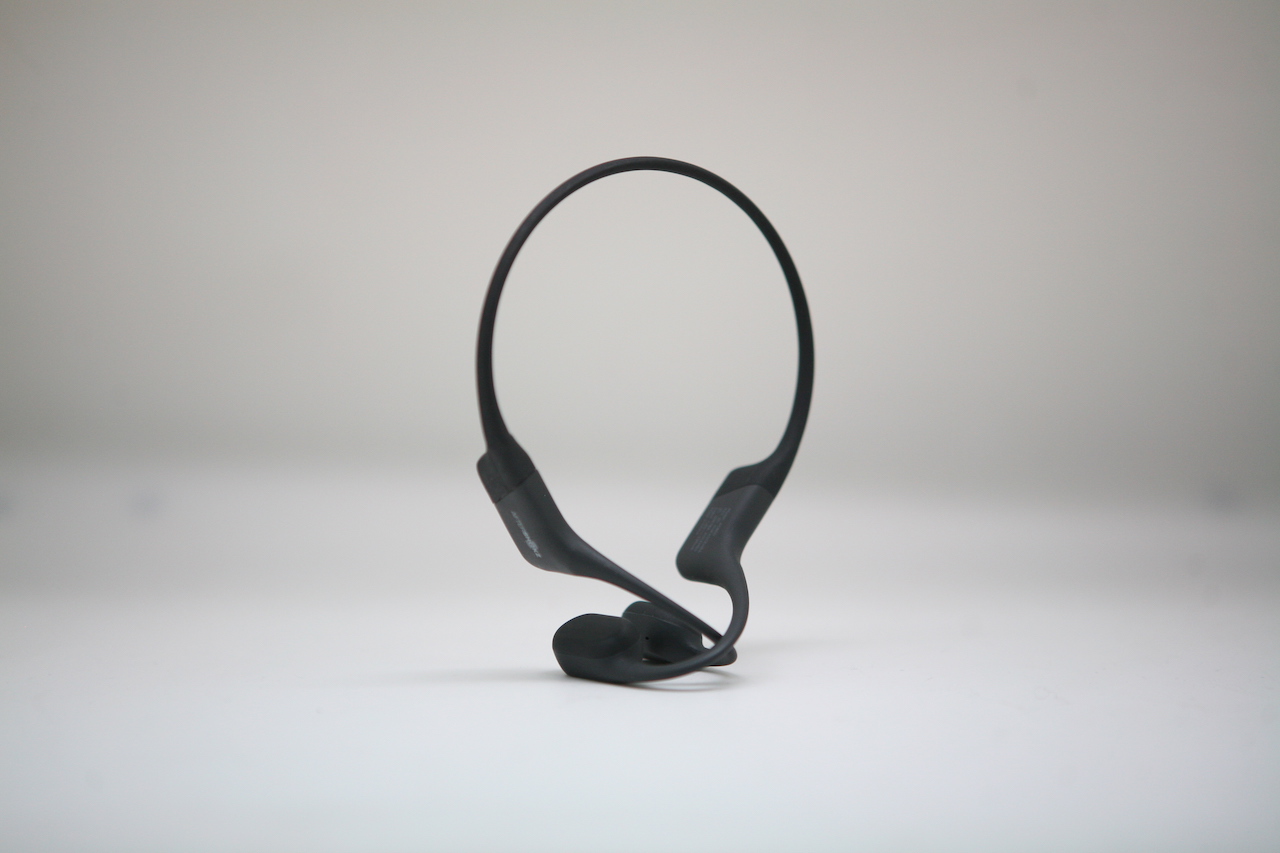
They retain their main purpose - not to cover the ears of the user, so that a person can respond to the sounds of the world, but now even less characteristics and qualities are sacrificed to the idea.
The sound really got better, cleaner and richer. It has become louder, so busy streets are no longer a hindrance. Vibration has become even less, and the insulation is even better, so from the point of view of comfort and long wear - Aeropex is not a problem. The increased autonomy, the low weight of the headset, and the “all-weather” guaranteed by IP67 also have long wear.
The microphone works very well , so the speaker doesn’t particularly strain, and the listener perceives the information well and does not ask again.
Almost every critically important indicator for a modern headset has increased: autonomy has increased, the degree of protection has increased, the sound quality has “increased”, so it should be noted that the price of headphones has also increased. And if previous models during Black Friday fell in price ( Titanium , Air ) then there are no super discounts on new items. We suggest you use a 15% AEROHABR coupon until 24/11/19 if you are interested.